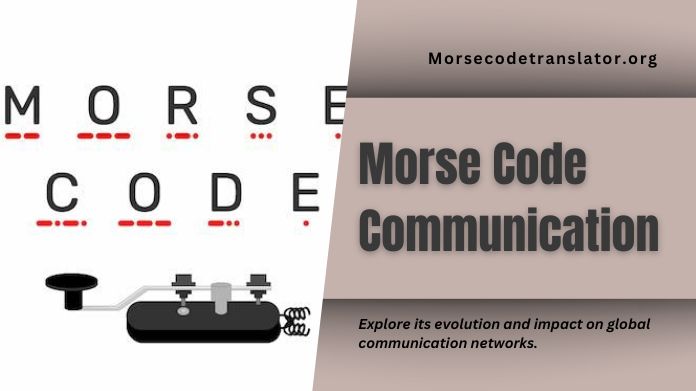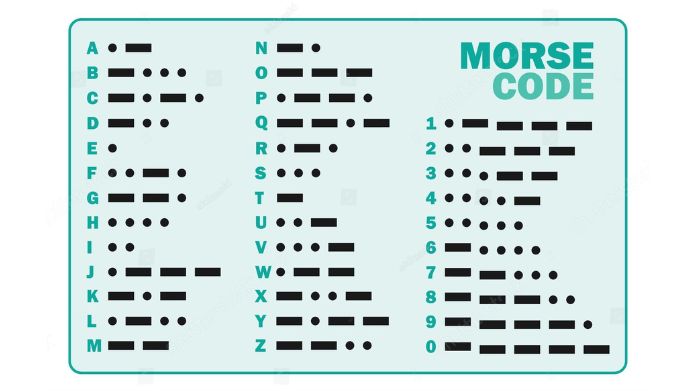In the annals of communication, few codes resonate with the echoes of history as profoundly as Morse Code. Morse Code, a series of dots and dashes, served as a revolutionary means of long-distance communication, connecting distant shores and shaping pivotal moments in human endeavors.
As we delve into the intricacies of Morse Code Communication History, we embark on a journey through the origins, evolution, and enduring significance of this iconic method of encoding messages.
Join us in decoding the legacy of Morse Code and uncovering its timeless impact on global communication.
What is Morse Code Communication?
Morse Code Communication is a communication method that uses a sequence of dots and dashes to convey letters and numbers. Samuel Morse invented it in the early 1830s, and it was widely used for long-distance communication before the invention of the telephone.
Each letter and number is represented by a unique mixture of dots and dashes, which can be transmitted using various methods, such as sound or light signals. Morse Code is still used today in certain situations, such as by amateur radio operators or in military and aviation communication.
What Are the Applications of Morse Code Communication?

Morse code communication has various applications across different fields. Some of its notable applications include:
1. Military Communication: Morse code was extensively used in military communication, particularly during wartime. It provided a reliable and efficient means of transmitting messages over long distances, especially when other communication methods were unavailable or compromised.
2. Aviation and Maritime Communication: Morse code was widely used in aviation and maritime industries for communication between pilots, ship operators, and air traffic control. It served as a backup communication method in case of radio or electrical failures, allowing for crucial messages to be conveyed.
3. Amateur Radio: Morse code remains an essential skill for amateur radio operators. Many radio enthusiasts continue to use Morse code as a unique and efficient way to communicate with other operators worldwide.
4. Signaling and Distress Calls: Morse code has been used for signaling purposes, especially in emergencies. It allows individuals to transmit distress calls using light signals, sound signals, or handheld devices like whistles or flashlights.
5. Telecommunication: Morse code was once used extensively in telegraph systems, allowing messages to be sent across long distances using telegraph wires. Although largely obsolete in modern telecommunications, Morse code remains a significant part of its history.
6. Education and Recreation: Learning Morse code is still popular among enthusiasts, hobbyists, and those interested in historical communication methods. It can be a fun and challenging skill to acquire, and many people enjoy using Morse code in various recreational activities.
These are just a few examples of the wide range of applications of Morse code communication. Despite technological advancements, Morse code remains important in specific domains and an intriguing aspect of communication history.
The Significance of Morse Code in Communication History

Morse code is of immense significance in the history of communication. Developed in the 1830s and 1840s by Samuel Morse and Alfred Vail, Morse code revolutionized long-distance transmission by enabling messages to be sent and received using a series of dots and dashes. This code was primarily used with the invention of the telegraph, allowing information to be transmitted over long distances in a relatively short time.
One of the key advantages of Morse code was its simplicity. By assigning a unique combination of dots and dashes to each letter of the alphabet, numbers, and various punctuation marks, Morse code could convey any message concisely and efficiently. This made it especially valuable when clear communication, such as in military operations and maritime communication, was essential.
Morse code also played a crucial role during times of emergency and distress. The SOS distress signal, which is represented in Morse code as “… — …”, became universally recognized as a call for help. This enabled ships, aircraft, and individuals needing assistance to communicate their distress signal quickly and effectively, increasing their chances of being rescued.
Furthermore, Morse code profoundly impacted the development of other communication technologies. It served as a foundation for the early development of radio communication and the later invention of the telephone. Additionally, Morse code was used for many years in the aviation and maritime industries, ensuring reliable and efficient communication.
Despite advancements in technology that have rendered Morse code largely obsolete in everyday communication, its significance cannot be overstated. It paved the way for future innovations in long-distance communication and remains an integral part of communication history.
Final Note
As we conclude our exploration into the significance of Morse Code Communication History, we unveil a timeless narrative that transcends the simplicity of dots and dashes.
It is a story of connectivity, emergency signals, cultural preservation, and the unwavering persistence of Morse Code in shaping pivotal moments across the vast tapestry of human endeavors. In decoding its legacy, we unveil not just a communication system but a symbol of innovation that continues reverberating through time.
